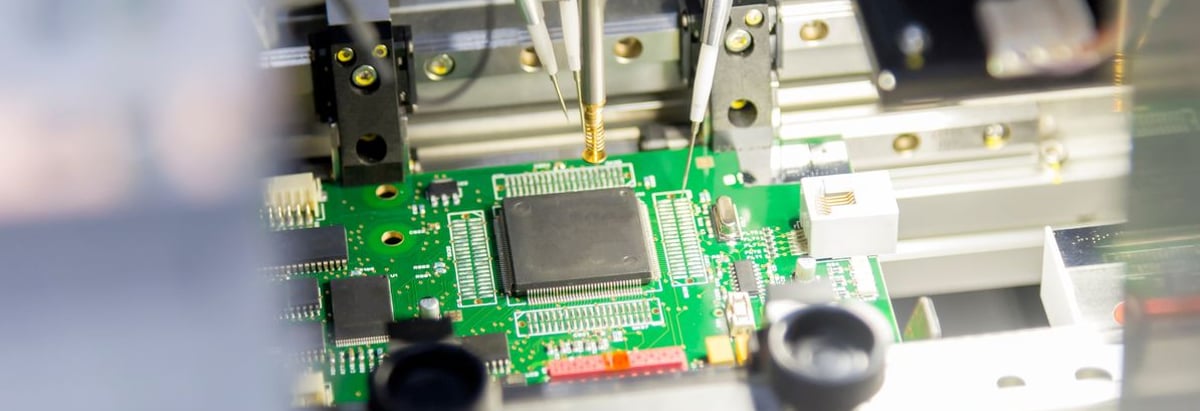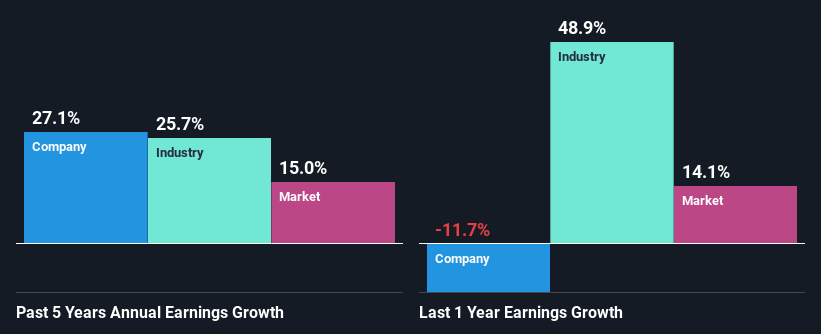- United States
- /
- Semiconductors
- /
- NasdaqGS:TER
Teradyne, Inc. (NASDAQ:TER) Stock Has Shown Weakness Lately But Financials Look Strong: Should Prospective Shareholders Make The Leap?

With its stock down 28% over the past three months, it is easy to disregard Teradyne (NASDAQ:TER). However, a closer look at its sound financials might cause you to think again. Given that fundamentals usually drive long-term market outcomes, the company is worth looking at. Specifically, we decided to study Teradyne's ROE in this article.
Return on equity or ROE is a key measure used to assess how efficiently a company's management is utilizing the company's capital. In short, ROE shows the profit each dollar generates with respect to its shareholder investments.
Check out the opportunities and risks within the US Semiconductor industry.
How To Calculate Return On Equity?
The formula for return on equity is:
Return on Equity = Net Profit (from continuing operations) ÷ Shareholders' Equity
So, based on the above formula, the ROE for Teradyne is:
37% = US$840m ÷ US$2.3b (Based on the trailing twelve months to July 2022).
The 'return' is the amount earned after tax over the last twelve months. Another way to think of that is that for every $1 worth of equity, the company was able to earn $0.37 in profit.
Why Is ROE Important For Earnings Growth?
We have already established that ROE serves as an efficient profit-generating gauge for a company's future earnings. Depending on how much of these profits the company reinvests or "retains", and how effectively it does so, we are then able to assess a company’s earnings growth potential. Assuming all else is equal, companies that have both a higher return on equity and higher profit retention are usually the ones that have a higher growth rate when compared to companies that don't have the same features.
A Side By Side comparison of Teradyne's Earnings Growth And 37% ROE
Firstly, we acknowledge that Teradyne has a significantly high ROE. Additionally, the company's ROE is higher compared to the industry average of 19% which is quite remarkable. Under the circumstances, Teradyne's considerable five year net income growth of 27% was to be expected.
As a next step, we compared Teradyne's net income growth with the industry and found that the company has a similar growth figure when compared with the industry average growth rate of 26% in the same period.

The basis for attaching value to a company is, to a great extent, tied to its earnings growth. It’s important for an investor to know whether the market has priced in the company's expected earnings growth (or decline). Doing so will help them establish if the stock's future looks promising or ominous. Is Teradyne fairly valued compared to other companies? These 3 valuation measures might help you decide.
Is Teradyne Efficiently Re-investing Its Profits?
Teradyne's ' three-year median payout ratio is on the lower side at 8.3% implying that it is retaining a higher percentage (92%) of its profits. So it seems like the management is reinvesting profits heavily to grow its business and this reflects in its earnings growth number.
Additionally, Teradyne has paid dividends over a period of nine years which means that the company is pretty serious about sharing its profits with shareholders. Our latest analyst data shows that the future payout ratio of the company over the next three years is expected to be approximately 7.2%. Therefore, the company's future ROE is also not expected to change by much with analysts predicting an ROE of 37%.
Conclusion
In total, we are pretty happy with Teradyne's performance. In particular, it's great to see that the company is investing heavily into its business and along with a high rate of return, that has resulted in a sizeable growth in its earnings. With that said, the latest industry analyst forecasts reveal that the company's earnings growth is expected to slow down. Are these analysts expectations based on the broad expectations for the industry, or on the company's fundamentals? Click here to be taken to our analyst's forecasts page for the company.
Valuation is complex, but we're here to simplify it.
Discover if Teradyne might be undervalued or overvalued with our detailed analysis, featuring fair value estimates, potential risks, dividends, insider trades, and its financial condition.
Access Free AnalysisHave feedback on this article? Concerned about the content? Get in touch with us directly. Alternatively, email editorial-team (at) simplywallst.com.
This article by Simply Wall St is general in nature. We provide commentary based on historical data and analyst forecasts only using an unbiased methodology and our articles are not intended to be financial advice. It does not constitute a recommendation to buy or sell any stock, and does not take account of your objectives, or your financial situation. We aim to bring you long-term focused analysis driven by fundamental data. Note that our analysis may not factor in the latest price-sensitive company announcements or qualitative material. Simply Wall St has no position in any stocks mentioned.
About NasdaqGS:TER
Teradyne
Designs, develops, manufactures, and sells automated test systems and robotics products worldwide.
Flawless balance sheet with high growth potential.


